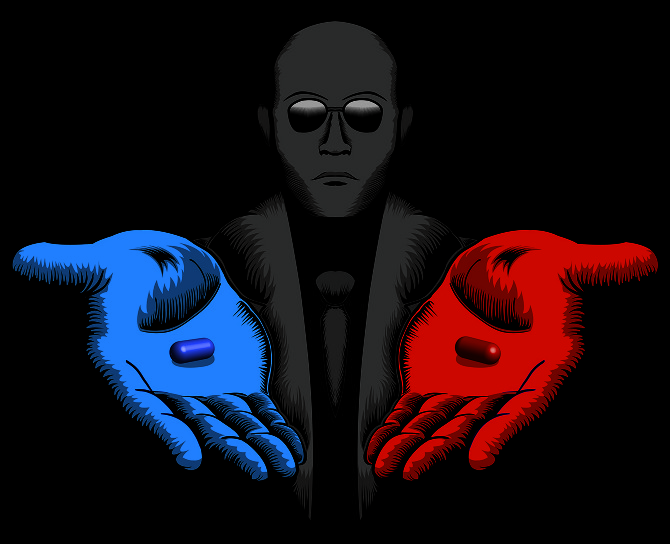Note: Originally published in the October 2017 issue of the Czech SF/F magazine XB-1.
My grandfather lived through the Golden Age of Science Fiction during 1930s and 1940s, when the modern SF genre made a major cultural impact in many other parts of the world. As a child I often looked in awe at my grandfather’s collection of Golden Age magazines and books.
I once asked him what it was like living through that era. My grandfather merely smiled and said “I just loved reading the stories.”
One day, when my grandchildren ask me what it was like living during our current Golden Age of SF/F Television, I plan to say, “I just loved watching the shows.”
We’re living in an age of television greatness, an era which HBO helped created at the beginning of the millennium with intense crime dramas such as The Sopranos and The Wire. These shows, which took visual episodic storytelling to new heights, influenced other networks and producers such as Netflix to do the same. The result is more great TV these days than anyone could possible watch in a lifetime.
However, what’s often missing in discussions over the great shows on TV is how much of that gold is mined within the science fiction and fantasy genre.
This doesn’t mean there weren’t great SF/F television shows in earlier decades. Star Trek and Doctor Who created the world’s first SF franchises back in the 1960s, a trend continued by 1978’s Battlestar Galactica. The soap opera Dark Shadows showed the potential of TV fantasies during the 1960s, as did the The Twilight Zone.
However, there were limitations on televised genre works in earlier decades. Special effects prior to the use of computer-generated imagery (CGI) were extremely expensive and often looked extremely unrealistic. While Hollywood could justify the cost of quality special effects on blockbuster movies, TV shows had more limited budgets, with the cost of special effects playing a significant role in the cancellation of both the original Star Trek and Battlestar Galactica.
Expensive special effects also limited the genre stories which could be told on TV. For example, Harlan Ellison’s original script for the Star Trek episode “The City on the Edge of Forever” was very different from what was eventually filmed. While creative disagreements between Ellison and Gene Roddenberry caused some of the changes, others resulted from how expensive it would have been to film Ellison’s script.
A side-effect of expense special effects was that many genre shows of this time period, such as Doctor Who, were also overly talkative. After all, it was far cheaper to film characters describing what was going on in a SF/F setting than to actually create the visual world and effects.
But by the 1990s realistic-looking and affordable CGI effects had expanded the storytelling possibilities of televised genre stories. And the arrival of good CGI coincided with increasing demand for in-depth episodic stories. This perfect melding of new visual worlds with deeper character-driven stories resulted in two great SF shows from the 1990s, Babylon 5 and Star Trek: Deep Space 9.
However, I believe it was Buffy the Vampire Slayer, the fantasy/horror/comedy series created by Joss Whedon running from 1997 to 2003, which truly set the stage for our current Golden Age of SF/F Television. The series followed the life of Buffy Summers, one in a long line of "Slayers" who battled demons and vampires while often falling into complicated relationships with the same. The series’ power rested fully on Whedon’s unique characters, in particular the strength of Buffy and her painful on-again-off-again relationship with the vampire Angel. The complex chemistry between the characters raised the show above other TV fantasies from that time such as Xena: Warrior Princess, which while fun never reached Buffy’s heights.
Joss Whedon’s next series, 2002’s Firefly, continued this mixing of character chemistry and drama but added a far higher standard of CGI effects. Set in a far future where humanity settled a distant star system, Firefly followed the crew of a rundown spaceship trying to survive in a space-western setting. Firefly was unique among many SF shows in that every character was fully realized with a complex dramatic arch — individual stories which, tragically, would not all be realized before the series was cancelled without finishing even a single season.
Fortunately, death by cancelation didn’t befall the next two great genre shows of our new golden age, the reimagined versions of Battlestar Galactica and Doctor Who. Debuting respectively in 2004 and 2005, both series built upon the strong universe creation, settings and characters of their earlier incarnations. They also showcased special effects which finally did justice to the grand scope of their stories, whether showing a ragtag group of ships struggling to reach a new home or the immortal Time Lord playing across space and time.
However, the new versions of Battlestar Galactica and Doctor Who also took their stories into new territories with extremely complex storytelling and characterizations which crossed back and forth through grimly realistic themes and ideas. Battlestar Galactica’s reworking of the original hotshot fighter pilot Starbuck into the tortured soul of Kara Thrace resulted in one of the best TV characters of all time. Doctor Who episodes such as "Blink," featuring the Weeping Angels, showed viewers new depths of fear while "The Doctor's Wife" gave a painful depth to the Doctor’s character and travels.
And now we’re caught up to our current day, with fantasies like Game of Thrones and SF such as The Expanse and Westworld being major cultural milestones. Even lesser-watched shows like Black Mirror and Orphan Black are creating stories which rank with the best SF/F television of all time. Add in the countless superhero shows and it’s easy to see how we are truly living through a Golden Age of SF/F Television.
One day, when your grandchildren ask what it was like with so much great SF/F on TV, simply tell them you loved watching the shows.


